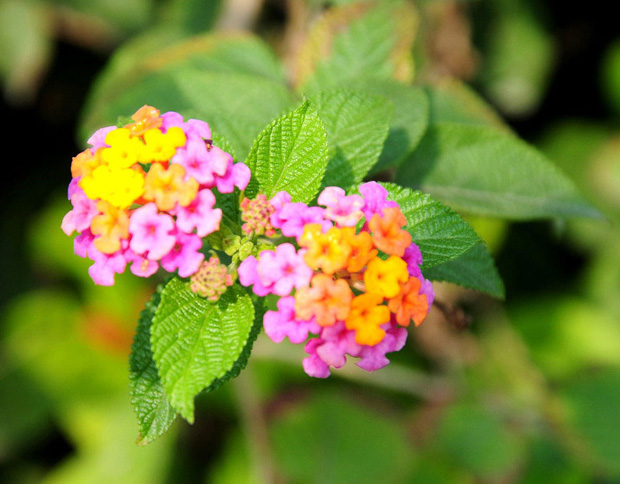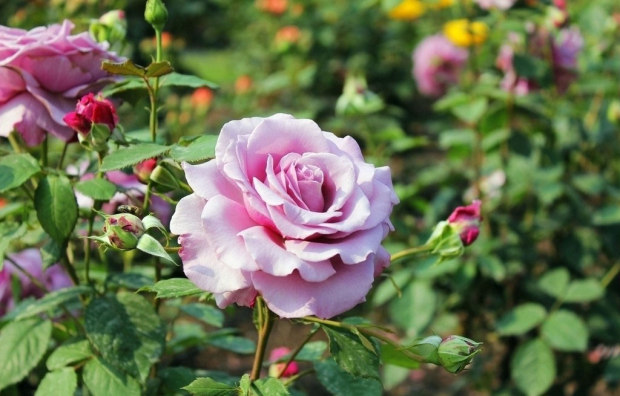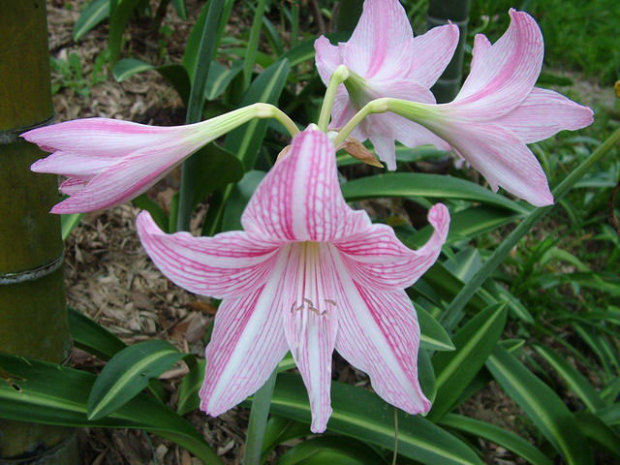Cultivation and Culture methods of Prunus mume
Because the five-colored plum blossoms successively and in different colors, some people call it Qiqiuhua, and it is called Lantana in Guangzhou. It is an evergreen shrub of Verbenaceae, with coarse hairs and fine thorns in the whole plant, rough thorns in the hands and a strong smell. Due to the dense inflorescences of most florets, they are like colorful balls in the green bushes. When appreciated, they also make people forget their unrighteousness. The flowers are yellow or pink at first, then orange or orange-red, and finally red, as well as pure red and pure yellow. The flowering period is almost constant throughout the year and can be used as potted flowers in the courtyard and indoors.
It is native to tropical America. Sex likes to be warm, moist, sunny and not cold-resistant. Requires soil rich in humus, loose, fertile and well drained. Cuttage is the main method of propagation. In spring and autumn, 10 cm long branches are cut and inserted into coarse sand. Under the temperature of about 20 degrees, they can take root in a month or so.

Five-color plum cultivation is relatively simple, in Guangdong, Fujian and other provinces can be planted in the courtyard open field, in the north is not resistant to frost, only as a pot, winter indoor winter. In the middle and late April of early spring, we moved outside, first changed the pot and applied base fertilizer, slightly trimmed the excess fibrous roots in the lower part of the plant, and the upper branches were trimmed once after the pot was installed. 3 years after flowering, the old branches were already weak, so a re-cutting should be carried out to make the new branches bloom and bloom luxuriantly.
Summer can be properly watered, and often rake flowerpot topsoil, in order to enhance the air permeability of the soil, every 10-15 days to irrigate fully mature thin fertilizer water. In order to promote sturdiness, when the branches are too long in autumn, the second pruning should be carried out, and the cold dew festival in early October should be moved indoors before and after the cold dew festival, put in a ventilated and sunny place, stop fertilization, control watering, make sure that the basin soil is wet and dry, and keep the room temperature at no less than 5 degrees in winter. You can survive the winter safely. Cultivation and Culture methods of Prunus mume
The following is an article on the cultivation and breeding methods of five-colored plum introduced by the Flower Bonsai Network.
Five-colored plum
Because the five-colored plum blossoms successively and in different colors, some people call it Qiqiuhua, and it is called Lantana in Guangzhou. It is an evergreen shrub of Verbenaceae, with coarse hairs and fine thorns in the whole plant, rough thorns in the hands and a strong smell. Due to the dense inflorescences of most florets, they are like colorful balls in the green bushes. When appreciated, they also make people forget their unrighteousness. The flowers are yellow or pink at first, then orange or orange-red, and finally red, as well as pure red and pure yellow. The flowering period is almost constant throughout the year and can be used as potted flowers in the courtyard and indoors.
It is native to tropical America. Sex likes to be warm, moist, sunny and not cold-resistant. Requires soil rich in humus, loose, fertile and well drained. Cuttage is the main method of propagation. In spring and autumn, 10 cm long branches are cut and inserted into coarse sand. Under the temperature of about 20 degrees, they can take root in a month or so.
Five-color plum cultivation is relatively simple, in Guangdong, Fujian and other provinces can be planted in the courtyard open field, in the north is not resistant to frost, only as a pot, winter indoor winter. In the middle and late April of early spring, we moved outside, first changed the pot and applied base fertilizer, slightly trimmed the excess fibrous roots in the lower part of the plant, and the upper branches were trimmed once after the pot was installed. 3 years after flowering, the old branches were already weak, so a re-cutting should be carried out to make the new branches bloom and bloom luxuriantly.
Summer can be properly watered, and often rake flowerpot topsoil, in order to enhance the air permeability of the soil, every 10-15 days to irrigate fully mature thin fertilizer water. In order to promote sturdiness, when the branches are too long in autumn, the second pruning should be carried out, and the cold dew festival in early October should be moved indoors before and after the cold dew festival, put in a ventilated and sunny place, stop fertilization, control watering, make sure that the basin soil is wet and dry, and keep the room temperature at no less than 5 degrees in winter. You can survive the winter safely.
The roots, leaves and flowers of Prunus mume can be used as medicine. The root is sweet and bitter, reducing the fever; the leaves are sweet and cool, detumescent and toxic; the flowers are light and cool, and stop bleeding.
Cultivation and conservation techniques of five-colored plum, also known as Ma Yingdan, stinky grass, is an erect or semi-vine shrub of Verbenaceae. From May to October, most florets dense into hemispherical heads; the flowers are variable in color, yellow or pink at first, then orange or orange, and finally red. There are red and yellow in the same inflorescence, so there are five-colored plum, seven flowers and other names. Its flowers have the inducement to attract butterflies, and when they bloom, there will be many butterflies.
This flower is native to South America, Brazil and other places. It likes warm, humid and sunny environment. It is suitable for growing at a temperature of 20 ℃. It is slightly drought-resistant and not cold-resistant. Forests in South China are often scattered. This peanut is skinned and resistant to pruning, and it is often planted in pots to the north of the Yangtze River. Potted five-color plum should turn the pot before leaving the house in spring, apply sufficient base fertilizer, and prune the branches appropriately. If it is a small seedling, it should be topped to promote lateral branches. For the formed plants, attention should be paid to the thinning of weak and diseased branches and proper truncation in order to maintain a good tree shape and promote more new shoots. If you do not leave seeds after flowering, you should pick off the residual flowers to facilitate the extraction of inflorescences from the axils of the lower leaves, keep plenty of sunshine and moist soil during the growing period, and not be too dry, especially during flowering. If it is too dry, it is easy to wilt. Affect flowering. From May to October, cake fertilizer and water or human feces should be applied once every 10 days, especially after flowering, in order to keep the flowers blooming. At the end of October, to move indoors, East China can be placed in a cold room for the winter. If the indoor sunshine is sufficient, the temperature above 10 ℃ can also blossom. After entering the house, watering should be controlled and fertilization should be stopped. Overlong shoots can be properly truncated to facilitate storage. The five-colored plum is resistant to pruning, and it is necessary to pick the heart frequently in order to make it a round head-shaped beautiful crown. When the seedlings grow to about 10 cm high, they are coring, prompting them to sprout branches from the base, leaving 5 branches as the main branches, and then coring when the main branches grow to a certain length, so that the growth of the main branches is balanced. The upper main branch is coring first, and the lower main branch is pruned after pruning. The upper main branch removes slightly more branches than the lower main branch, so that the growth among the branches is symmetrical, forming a round head plant shape. After the plant is formed, as the branches continue to grow, they should be often thinned and cut short in the future. Combine to change the basin every spring and cut off the dense branches, weak branches, cross branches and disease and insect branches from the base. According to the growth condition, the reserved branches were cut short with 4 buds. Cut off the residual flowers in time after flowering so as not to consume nutrients.
- Prev

Cultivation and Culture of Rose and Rose
Rose, also known as Catharanthus roseus, also known as the four Seasons Rose, because it blossoms throughout the year, and Rose is a close relative. The cultivation of rose in China has a long history. In ancient times, there is only a flower without ten days of red, this flower has no day without spring breeze to praise the flowering characteristics of the four seasons. But it refers to the Chinese rose, that is, monthly red or iron red.
- Next

Cultivation and Culture methods of Zhu Dinghong
On Zhu Dinghong's large, globular bulb, there are 8 flattened and slightly fleshy leaves, which are drawn out at the same time or after flowering, and there are stout and hollow flower stems in the leaves, which are similar to lilies, while there are 6 bright-colored funnel-shaped flowers in white, red, or white and red.
Related
- Fuxing push coffee new agricultural production and marketing class: lack of small-scale processing plants
- Jujube rice field leisure farm deep ploughing Yilan for five years to create a space for organic food and play
- Nongyu Farm-A trial of organic papaya for brave women with advanced technology
- Four points for attention in the prevention and control of diseases and insect pests of edible fungi
- How to add nutrient solution to Edible Fungi
- Is there any good way to control edible fungus mites?
- Open Inoculation Technology of Edible Fungi
- Is there any clever way to use fertilizer for edible fungus in winter?
- What agents are used to kill the pathogens of edible fungi in the mushroom shed?
- Rapid drying of Edible Fungi

